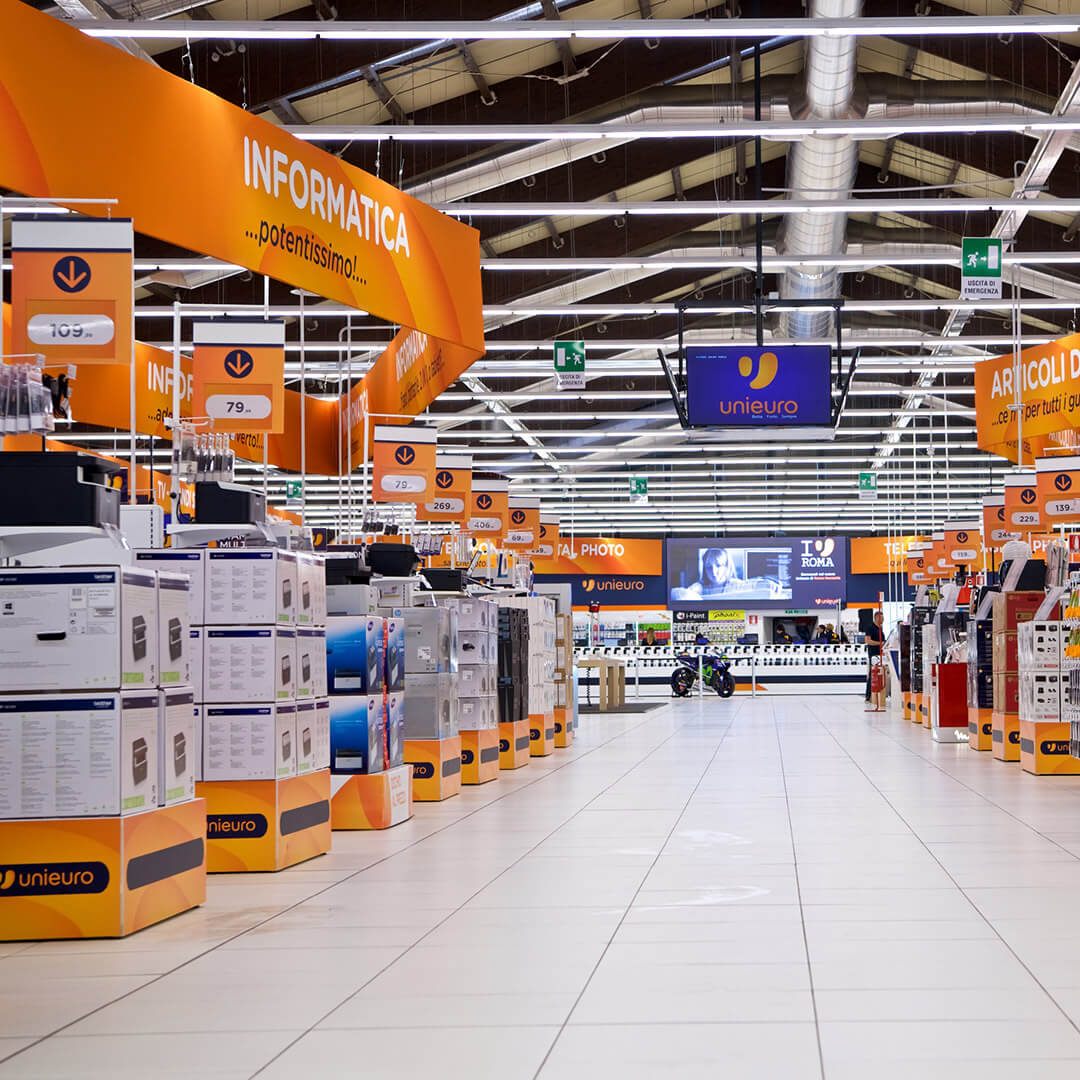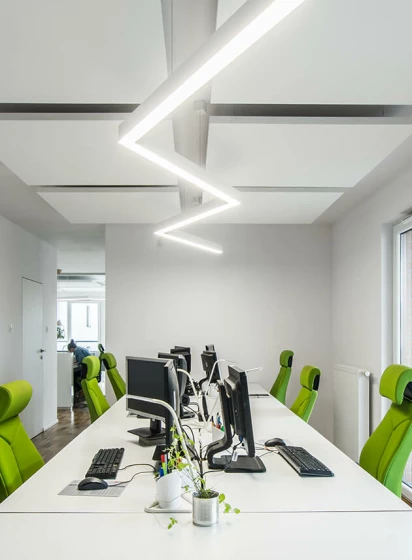
Lighting Modernisation: Sustainability and savings thanks to the lighting replacement
Energy efficiency and sustainability are key concerns for modern and successful businesses, that’s why the traditional lighting systems we've grown accustomed to are gradually being replaced by modern, energy-efficient alternatives. Lighting modernization not only offers a multitude of benefits such as enhanced visibility and aesthetics, cost savings, and improved productivity but also presents an opportunity for different industries and spaces to create a more sustainable and cost-effective environment.
Why modernize lighting?
Lighting modernization not only brings numerous benefits but also generates significant cost savings over time. While the initial investment may seem substantial, the long-term advantages outweigh the costs.
Energy Efficiency
Traditional lighting solutions such as incandescent bulbs and fluorescent tubes consume excessive amounts of energy, resulting in higher electricity bills and increased environmental impact. By switching to energy-efficient LEDs, significant reductions in energy consumption can be achieved. LEDs consume up to 80% less energy, translating into substantial cost savings and a reduced carbon footprint.
Cost Savings and Return on Investment (ROI)
The potential savings from lighting modernization are significant. LED lighting's energy efficiency combined with smart lighting controls can result in up to 95% reduction in lighting-related energy costs in some cases, which makes the return on investment very fast and efficient. Additionally, the extended lifespan of LED lights reduces maintenance and replacement expenses. Over time, these savings accumulate, positively impacting the bottom line of businesses.
Longevity and Durability
Unlike traditional lighting, which requires frequent replacements, LED lights have an impressively long lifespan. These lights can last up to 25 times longer than incandescent bulbs, reducing maintenance costs and minimizing disruptions in various industries. With LUXIONA lighting with a lifespan of up to 100 000 h the costs of maintenance or replacement are extremely low.



Enhanced Quality
In industrial spaces, where precise lighting can improve safety and prevent accidents, workers can perform tasks with greater accuracy and efficiency, thanks to modern lighting technologies. Highly effective LUXIONA LED sources provide reduced glare, uniform lighting, enhanced visibility without eye strain. With customizable light parameters and dimming capabilities, we create lighting conditions for all environments and improve productivity and well-being.
Customization and Control
Lighting modernization allows for greater control and customization of lighting systems. Smart lighting solutions enable businesses to adjust brightness levels, and colour temperature, and even create dynamic lighting scenarios based on specific needs or times of the day. This includes also programming specific lighting scenes for regular repetitive tasks, that are planned according to a fixed working schedule.
Environmental Impact
By transitioning to energy-efficient lighting, businesses play a significant role in reducing carbon emissions and combating climate change. LED lighting not only consumes less energy but also produces less heat and contains no harmful substances. This environmental consciousness enhances a brand's reputation and aligns with sustainability goals. Thanks to lowering the carbon emission it is possible for businesses to receive acknowledged green certifications for their buildings and production halls.
Advantages across all industries and spaces
Industrial Spaces and Warehouses
Industrial environments often require robust lighting systems to ensure safety and efficiency. Lighting modernization in these spaces can enhance visibility, reducing accidents and errors. Moreover, LEDs have an instant-on capability, eliminating warm-up times, and can operate reliably in extreme temperatures. This makes them ideal for warehouses, where consistent illumination is critical for accurate inventory management and streamlined operations.

Offices and Commercial Areas
Offices and large commercial areas can greatly benefit from lighting modernization. LED lights can create a more pleasant and productive work environment by reducing glare, enhancing colour rendering, and providing better lighting control. Implementing smart lighting systems with occupancy sensors and daylight harvesting can further optimize energy usage by automatically adjusting lighting levels based on occupancy and natural light availability.

Shopping centres and Supermarkets
In the retail sector, proper lighting plays a crucial role in attracting customers and showcasing products effectively. LED lighting can significantly enhance visual appeal and improve the shopping experience. LEDs can make products appear more vibrant and appealing by providing better colour accuracy and uniform illumination. Additionally, LEDs can be integrated with advanced controls, enabling retailers to create dynamic lighting scenes to enhance specific areas or promotions.

Best practices for lighting modernization
Conduct a comprehensive audit
Before embarking on a lighting modernization project, it is essential to conduct a thorough audit of existing lighting systems. Assess the energy consumption, lighting quality, and potential areas for improvement. This audit will provide insights into the specific lighting needs and opportunities for energy savings.
Stage 1: Site survey
Detailed familiarisation with the site, the space plan and the prevailing lighting conditions. Examination of the factors that will influence the proposed solution.
Stage 2: Technical measurements
Counting the number of different types of luminaires used in a specific space and their wattage, efficiency and state of wear. Verification of the required lighting intensities and conditions under which the luminaires operate.
Stage 3: Retrofit project
Lighting modernization project taking into consideration all the applicable standards at the selected facility, as well as all the elements requiring replacement or improvement.
Stage 4: Offer with simulation of savings
Calculation of ROI, estimation of savings (under the assumptions of lighting use in the selected space per day). Preparation of a full offer.
Stage 5: Measurement and evaluation of the project
Carry out illuminance measurements, confirming that the objectives of the retrofit project have been achieved.
Tailor solutions to different spaces
Each industry and space requires a unique lighting approach. Industrial spaces and warehouses often benefit from high-bay LED fixtures, offering ample illumination for large areas. Offices and commercial areas can benefit from a combination of task lighting and ambient lighting to enhance productivity and aesthetics. Supermarkets can utilize accent lighting to highlight products and create an inviting atmosphere.
Embrace smart lighting controls
Integrating smart lighting controls, such as presence sensors and daylight sensors and harvesting systems, can maximize energy savings. These technologies automatically adjust lighting levels based on occupancy and available natural light, ensuring efficient energy use. Additionally, implementing lighting control systems can provide centralized management and monitoring, facilitating maintenance and troubleshooting.
Energy savings through optimised light levels
The luminous intensity is reduced over time, through a reduction in the flux of the LED light source over time and the accumulation of dust. In order to compensate for these losses and maintain an adequate level of illuminance throughout the lifetime of the luminaire, they are compensated by higher illuminance. This results in excessive energy consumption over the product's full life cycle. Intelligent lighting control allows the light to be dimmed to the desired level and energy consumption to be reduced. The initial lighting level is maintained throughout the cycle by gradually increasing the power and maintaining the correct light output.
Presence detectors
One of the technologies used for presence detection are Passive Infrared Sensors (PIR). These sensors detect the presence of a user and switch on luminaires that were previously switched off. If the sensor does not detect any renewed user activity for a pre-programmed time interval, the luminaires will switch off, allowing energy consumption to be reduced. It is also possible to programme a luminaire or the user's "absence", thus ensuring continuous energy savings throughout the year.
Combining LED lighting & natural light
Thanks to lighting control systems with natural light measurement, we can react in real-time to the lighting conditions in the room. When natural light enters a room, the sensor detects the appropriate level of natural light, takes it into account and gradually dims the light emitted from the luminaires, saving energy while still maintaining the required lighting level. As the level of natural light increases, the luminaire's light is dimmed proportionally until it is switched off completely, thus reducing energy consumption. The result is an additional augmentation of the savings already achieved through optimised illuminance.
Plan for modularity, flexibility and scalability
Consider future expansion and changing lighting needs when designing the lighting system. Opt for modular lighting fixtures and flexible control systems that can easily adapt to evolving requirements. With the LUXIONA track lights system and linear systems with different modules, you will gain flexible, easily adaptable solutions that you can modify or further develop by changing the layout of the luminaires by adding, removing, or exchanging the lighting points for luminaires with different parameters.
Seek professional expertise
Collaborating with our experienced lighting professionals and advisors can ensure the right lighting design, product selection, and installation. We can guide you through the process, taking into account industry-specific regulations and best practices.

Acoustic Solutions:
Elevating Comfort and Productivity with Sound-Absorbent Luminaires

Industry Lighting:
Professional solutions that provide safety, productivity, and energy cost savings.

Retail Lighting:
Bring out the best in your retail space
